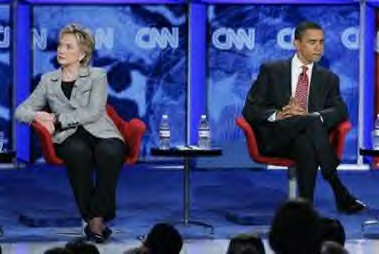
Posture. 1. The spatial orientation, measured in degrees, of an individual's shoulders relative to those of another. 2. The position of a speaker's upper body in relation to a listener's (e.g., facing or angled away). 3. The degree of body alignment between a speaker and listener, as measured in the coronal plane (which divides the body into front and back).
Usage: Angular distance reveals how we relate to (i.e., feel about)
people sitting, standing, or waiting nearby. Our upper body unwittingly
squares-up, addresses, and "aims" at those we like,
admire, and agree with, but angles away from disliked persons and people with
whom we disagree. In a friendly conversation, formal interview, or staff
meeting, e.g., a greater angular distance (i.e, turning away)
substitutes for greater linear distance. Angular distance may range from 0
degrees (directly facing) to 180 degrees (turning one's
back).
Salesmanship. "Do not turn your upper body away from
the prospect. It doesn't make you look casual; it makes you look afraid,
uninterested, or even unfriendly" (Delmar 1984:47).
U.S. politics. Known to be ill-at-ease around people, former President Richard Milhous Nixon revealed his discomfort with an exaggerated angular distance, as if to "remove" himself from others nearby. White House photographs taken at staff meetings in the early 1970s show a seated Mr. Nixon, with shoulders turned away from his advisors at angular distances of 90 degrees.
RESEARCH REPORTS: 1. Eight
positions (from face to face to back to back) are noted in the
original proxemics notation system (Hall 1963). 2. GSR
(sweaty-palm response) is greatest when subjects are
approached frontally (McBride, King, and James 1965). 3. With
adult strangers, boys create a greater angular distance than girls (Stern and
Bender 1974). 4. The frequency of trunk rotation
"showed a marked increase" in conditions of severe crowding (Baxter and Rozelle
1975:49).
See also BODY WALL, CUT-OFF, IMMEDIACY.
Copyright 1998 - 2016 (David B. Givens/Center for Nonverbal Studies)
News photo of U.S. Democratic presidential candidates Hillary Clinton and Barack Obama at a debate in 2008; their angular distance bespeaks the acknowledged disliking they felt as the campaign dragged on (picture credit: CNN).